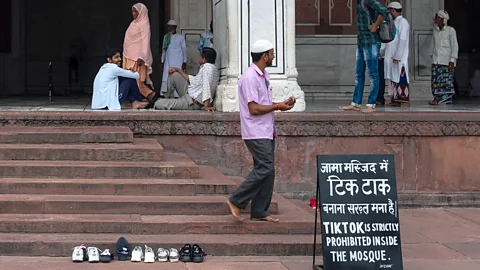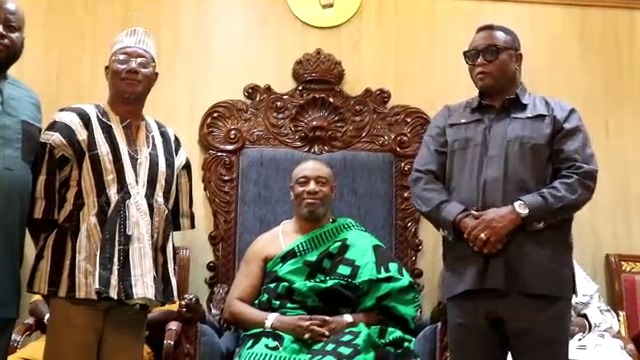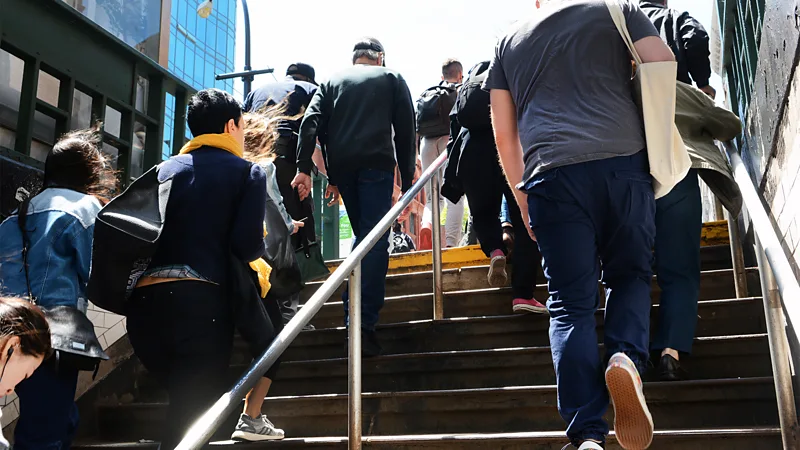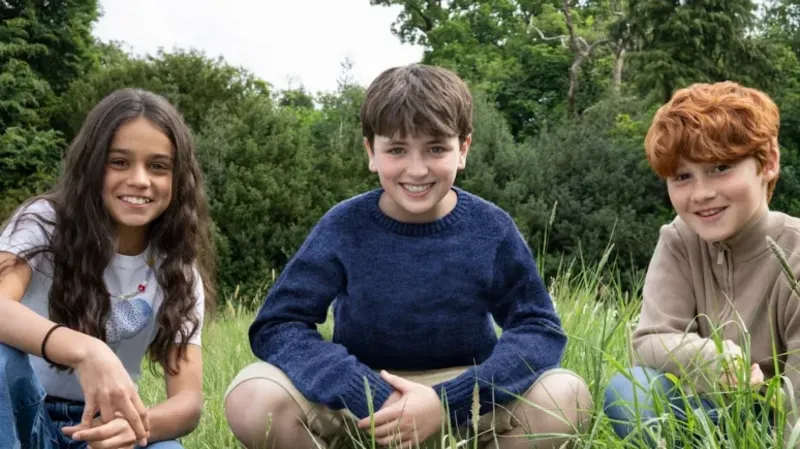The ghosts of India's TikTok: What happens when a social media app is banned

TikTok was one of India's most popular apps – until it was banned in 2020. It's a lesson for what might unfold if a US ban goes ahead.
Four years ago, India was TikTok's biggest market. The app boasted a growing base of 200 million users, thriving subcultures and sometimes life-changing opportunities for creators and influencers. TikTok seemed unstoppable – until simmering tensions on the border between India and China erupted into deadly violence.
After the border skirmish, the Indian government banned the app on 29 June 2020. Almost overnight, TikTok was gone. But the accounts and videos of Indian TikTok are still online, frozen in time when the app had just emerged as a cultural giant.
In some ways, it could offer a preview of what might lie on the horizon in the United States. In April, 2024 President Joe Biden signed a bill into law that could ultimately ban TikTok from the US, marking a new chapter after years of threats and failed legislation. The law requires the company that owns TikTok, ByteDance, to sell its stake in the app within the next nine months, with a further three-month grace period, or face a potential ban in the country. ByteDance says it has no intention of selling the social media platform, but on 6 December, a US federal appeals court rejected the company's bid to overturn the law. The platform is set to become unavailable on 29 January, though some observers expect the case will make it to the Supreme Court, the highest authority in the US.
Banning a massive social media app would be an unprecedented moment in American tech history, though the looming court battle currently leaves TikTok's fate uncertain. But the Indian experience shows what can happen when a major country wipes TikTok from its citizen's smartphones. India is not the only country to have taken the step either – in November 2023, Nepal also announced a decision to ban TikTok and Pakistan has implemented a number of temporary bans since 2020. As the app's 150 million US users swipe through videos in limbo, the story of India’s TikTok ban shows that users are quick to adapt, but also that when TikTok dies, much of its culture dies with it.
 India had more than 200 million users of TikTok before the app was banned (Credit: Getty Images)
India had more than 200 million users of TikTok before the app was banned (Credit: Getty Images)Sucharita Tyagi, a film critic based in Mumbai, had grown her account to 11,000 followers when TikTok came down, with some of her videos racking up millions of views.
"TikTok was huge. People were coming together all over the country, dancing, putting up skits, posting about how they run their homestead in their small town in the hills," says Tyagi. "There was a massive number of people who suddenly had this exposure that they had always been denied, but now it was possible."
The app was a particular phenomenon because of the ways its algorithm gave opportunities to rural Indian users, who were able to find an audience and even reach celebrity status not possible on other apps.
"It democratised content creation for the first time," says New Delhi-based technology writer and analyst Prasanto K Roy. "We began to see a lot of these very rural people fairly low down on the socio-economic ladder who would never dream of getting a following, or making money on it. And TikTok's discovery algorithm would deliver it to users who wanted to see it. There was nothing quite like it in terms of hyper-local videos."
TikTok holds a similar cultural significance in the US, where niche communities flourish and an untold number of small creators and businesses base their livelihood around the app. It's a kind of success that's less prevalent on other social media platforms. Instagram, for example, is generally tuned more for consuming content from accounts with big followings, while TikTok places a heavier emphasis on encouraging regular users to post.
When TikTok went offline in India, the government banned 58 other Chinese apps along with it, including some that are currently growing in popularity in the US today, such as the fashion shopping app Shein. As the years rolled on, India banned over a hundred more Chinese apps, though negotiations recently brought an Indian version of Shein back online.
The same could happen in the US. The new law sets a precedent and creates a mechanism for the American government to get rid of other Chinese apps. The privacy and national security concerns politicians voice about TikTok could apply to a host of other companies as well.
And when a popular app is removed, others can attempt to fill the gap. "As soon as TikTok was banned it opened up a multibillion-dollar opportunity," says Nikhil Pahwa, an Indian tech policy analyst and founder of the news site MediaNama. "Multiple Indian start-ups launched or pivoted to fill the gap."

For months, the Indian technology press was flooded with news about these buzzy new Indian social media companies, with names Chingari, Moj and MX Taka Tak. Some found initial success, luring former TikTok stars onto their platforms and securing investments and even governmental support. It splintered the Indian social market into different corners as the new apps battled for dominance, but that post-TikTok gold rush didn't last long.
In August 2020, Instagram launched a short-form video feed called Reels, just months after the TikTok ban. YouTube followed suit with Shorts, its own copycat TikTok functionality, a month later. Instagram and YouTube were already entrenched in India, and the field of new start-ups didn't stand a chance.
"There was a lot of buzz around alternatives to TikTok, but most faded away in the long run," says Prateek Waghre, executive director of the Internet Freedom Foundation, an Indian advocacy group. "In the end, the one that benefited the most was probably Instagram."
For many of Indian TikTok's bigger creators and their fans, it wasn't long before they moved to Meta and Google's apps, and many found similar success.
For example, Geet, an Indian social media influencer who only goes by her first name, rose to full-blown stardom on TikTok teaching "American English" and giving life advice and pep talks. She had 10 million followers across three accounts by the time TikTok was banned.
In a 2020 interview with the BBC, Geet shared concerns about the future of her career. But four years later, she's gathered nearly five million followers across Instagram and YouTube.
However, the users and experts the BBC spoke to say something was lost in the post-TikTok transition. Instagram and YouTube may have snatched up TikTok's traffic, but the apps didn't recreate the feeling of Indian TikTok.
"TikTok was a comparatively different kind of user base as far as creators go," says Pahwa. "You had farmers, and bricklayers, and people from small towns uploading videos on TikTok. One doesn't see that as much on YouTube Shorts and Instagram Reels. TikTok's discovery mechanism was very different."
 The ban of TikTok in India came at a time when tensions with China were already heightened (Credit: Getty Images)
The ban of TikTok in India came at a time when tensions with China were already heightened (Credit: Getty Images)If TikTok is banned in the US, the American social media landscape may follow a similar path to India's. Four years after the ban, Instagram and YouTube have already established themselves as a home for short videos. Even LinkedIn is experimenting with a TikTok-style video feed.
The app's competitors have proven they don't need to recreate TikTok's culture to find success. It's possible, if not likely, that America's hyper-local and niche content would vanish, just like it did in India. In fact, the cultural ramifications on the US would be far more significant. Nearly one-third of Americans aged 18-to-29 get their news from TikTok, according to the Pew Research Center.
The US has fewer TikTok users than the 200 million India had in its prime, but India is home to 1.4 billion people. TikTok reportedly has 170 million users in the US, more than half the country's population.
"When India banned TikTok, the app was not the behemoth that it is now," says Tyagi. "It has turned into a cultural revolution over the last few years. I think banning it now in America would have a much larger impact."
What's already different is TikTok's response. The company has vowed a legal battle over the US government's new law, a fight that may wind its way up to the US Supreme Court. TikTok could have launched a similar legal challenge to India's ban, but chose not to.
"Chinese companies have good reason to be hesitant to go to courts in India against the Indian government," says Roy. "I don't think they would find them to be very sympathetic."
India's ban was also immediate, taking effect in a matter of weeks. TikTok's upcoming legal challenge in the US could tie up the law for years, and there is no certainty that the legislation will stand up to a battle in the courts.
There's also a far greater chance a US TikTok ban would spark a trade war. "I think there's a distinct possibility of reciprocity from China," says Pahwa. China condemned India for banning TikTok, but there wasn't any overt retaliation. The US may not be so lucky.
There are numerous reasons for China's response to the Indian ban. One is the fact that India's tech industry is essentially non-existent in China. America's tech industry, on the other hand, offers plenty of opportunities for a reciprocal attack. China has already launched an effort to "delete America" and replace US technology with domestic alternatives. A TikTok ban could ramp up that project.
"The TikTok ban was so sudden when it happened," says Tyagi. "For me it wasn't that big of a deal, I was just using the app to promote my other work. But it felt weird and unfair to a lot of people, especially people who were actually making money and getting brand deals." Losing TikTok didn't affect Tyagi's livelihood, but it did cut her off from her account. That is, until she took a trip to the US.
"When I visited America and l was surprised to see my profile was still active," says Tyagi. It was like a trip back in time. She even posted a few videos. Most of her followers back home couldn't see them of course, but she got a little engagement from Indians living abroad.
"All these millions of accounts are still there," Tyagi says. "It's interesting to see that TikTok kept them. I wonder if they're hoping India will let them come back."
Source: BBC
























































